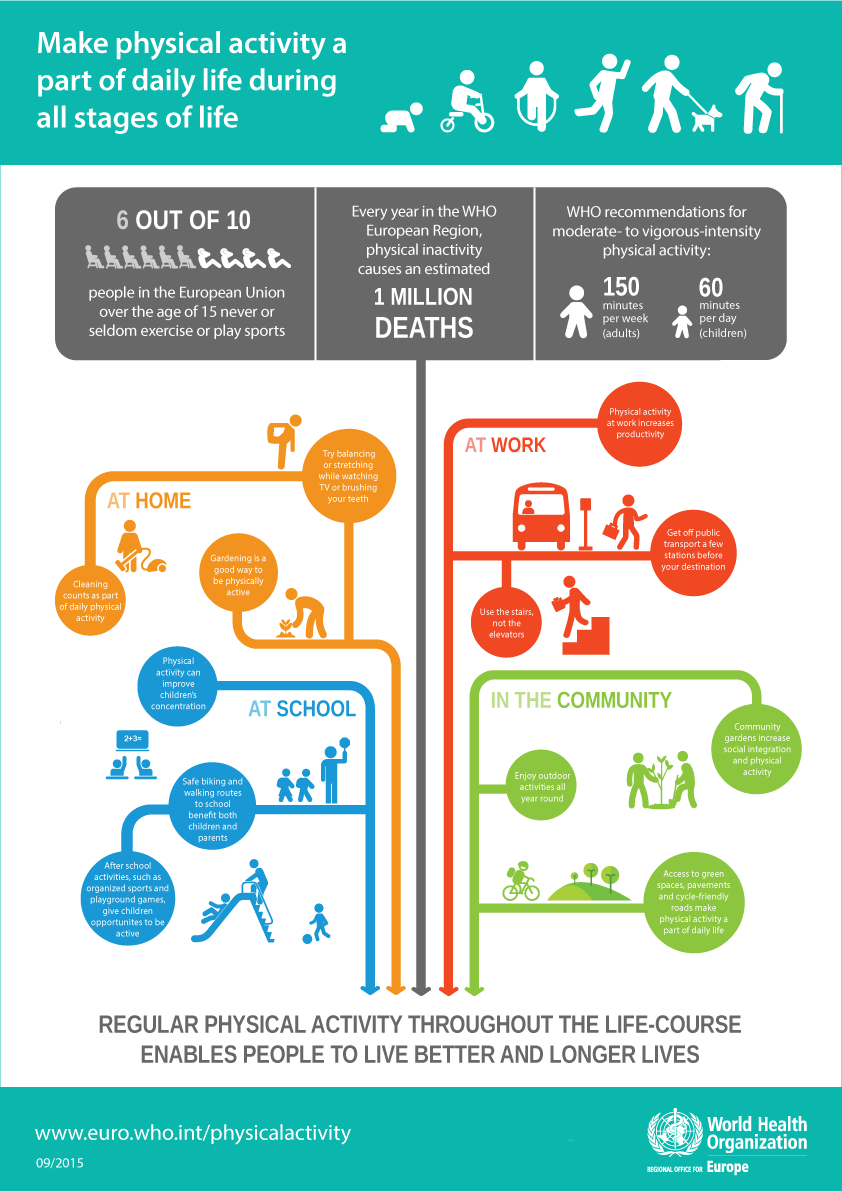Data and statistics

Physical activity is defined as any bodily movement produced by skeletal muscles that requires energy expenditure and is a fundamental means of improving people's physical and mental health. It reduces the risks of many noncommunicable diseases and benefits society by increasing social interaction and community engagement. Physical activity is not just a public health issue; it also promotes the well-being of communities and the protection of the environment, and comprises an investment in future generations.
Worldwide, physical inactivity is estimated to be the primary cause of approximately 21-25% of breast and colon cancers, 27% of diabetes and approximately 30% of ischaemic heart disease.
Physical activity versus exercise
Physical activity should not be mistaken with exercise. Exercise is a subcategory of physical activity that is planned, structured, repetitive, and purposeful in the sense that the improvement or maintenance of one or more components of physical fitness is the objective. Physical activity includes exercise as well as other activities which involve bodily movement and are done as part of playing, working, active transportation, house chores and recreational activities.



